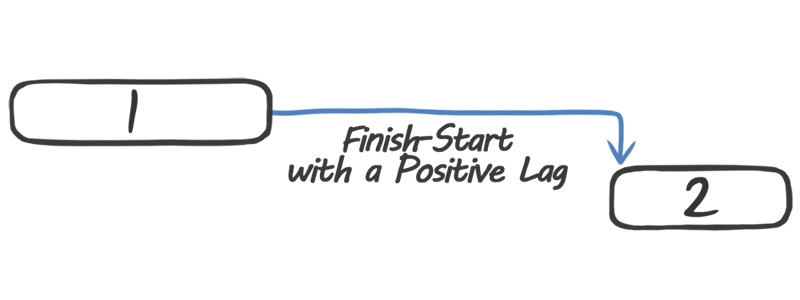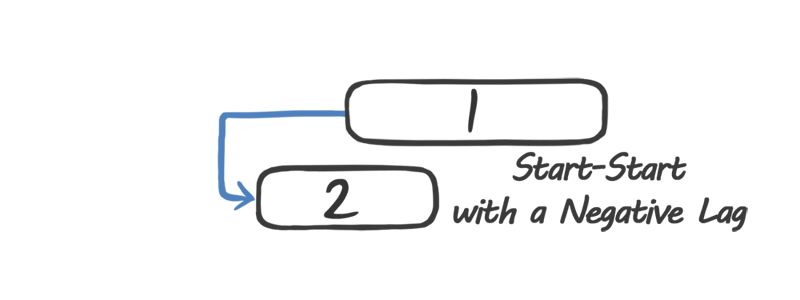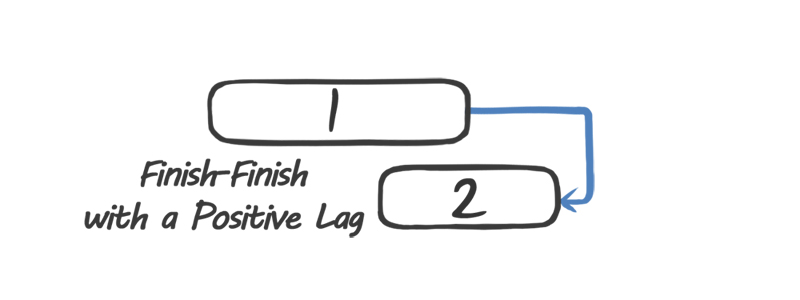After the project has been broken down into appropriate level tasks in the work plan, any dependencies between various tasks must be determined and defined. As part of this process it is important to examine whether any task is dependent on any other task, and if so, how.
People often go astray here and create unnecessary and strange connections between tasks. There are only two reasons to connect any two tasks in the work plan:
- Natural Law – It is physically impossible or illogical to work on one task before another one is completed. For example, it is not possible to construct the roof of a building until the load-bearing walls are built, or edit a book before it was written.
- Organizational Law – The laws of the organization running the project must be followed. For example, one may not begin development work before the client approves the project specifications document.
It is best to avoid generating too many task connections. Ensure that any defined connection falls into one of the two categories above. If it does not, avoid adding it.
A common mistake is creating a connection between tasks assigned to one resource for the sole purpose of avoiding overloading the resource by demanding he complete several tasks simultaneously. Many are tempted to create such connections and then regret it at the tracking and control stages, when every change in human resources necessitates a re-examination of task connections to determine whether existing connections are real task connections or the result of resource delegation.
There are four types of dependencies between tasks:
A ‘Finish to Start’ connection is the most common one however, it does not necessarily best describe the relationship between the tasks—not just at the planning stage but also throughout project execution—taking into account that changes can always take place. Therefore, you should use the type of relationship that best suites the dependency between the tasks.
Sometimes, it is not enough to define a simple connection in order to describe the real relationship between the dependent tasks. For example, take the case where one task can only begin two days after another task begins. In order to describe such a scenario, we must add a ‘lag’ (delay) to the connection. A positive or negative lag can be added to each connection, constituting an added descriptor of the connection between the tasks, as follows:
Examples:

‘Finish to Start’ with a two day positive delay
Painting a second coat on a wall (2) can begin—at the earliest—two days after the first coat was painted (1), since the first coat needs time to dry.

‘Start to Start’ with a two day negative delay
Delivering furniture to a new office (2) can begin—at the earliest—two days before the moving date (1).

‘Finish to Finish’ with a two day positive delay
Drawing the book’s illustrations (2) can be completed—at the earliest—two days after the content is completed (1).

‘Start to Finish’ with a two day negative delay
The publicity campaign for the new banknotes available for release (2) cannot be completed before two weeks have passed since distribution of the new banknotes to market began (1).
